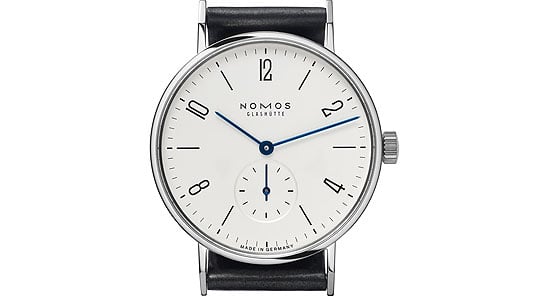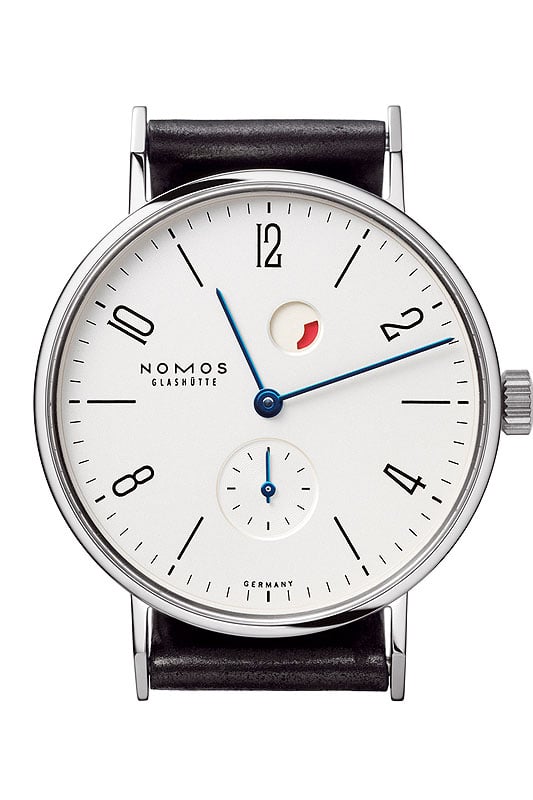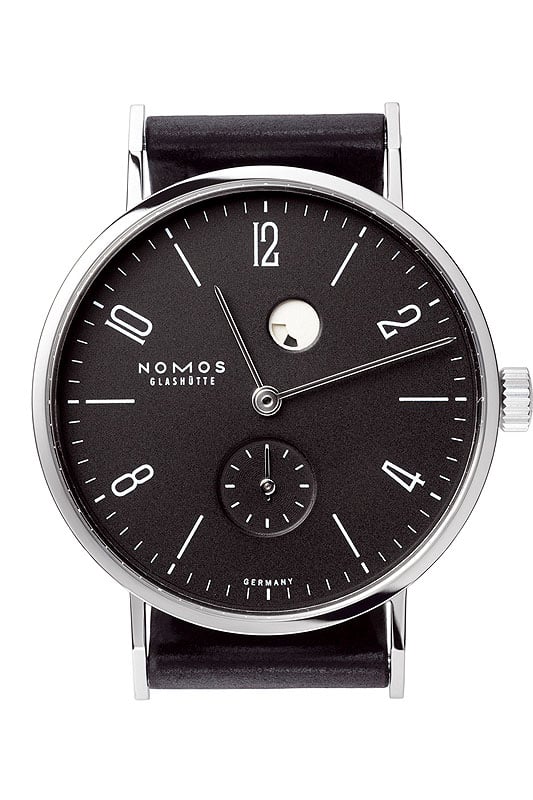
The latest in Gisbert L. Brunner’s series on iconic watches is the Bauhaus-styled Tangente from German manufacturer Nomos.
Created by architect Walter Gropius in the immediate post-World War One period, the Bauhaus movement in Germany’s Weimar Republic had a vision of a ‘total’ work of art or design, in which art combines with craftsmanship to produce the characteristically ‘clean’, modernist designs of the 20s and 30s.
Since the reunification of the country in 1990, the formerly East German region of Saxony once more became famous for watchmaking, with the town of Glashütte its centre. Just two months after the fall of the Berlin Wall, Roland Schwertner arrived in the town and registered the trademark 'NOMOS Glashütte/SA'.
In 1991, the first collection went on sale and two years later the famous Tangente, created in the Bauhaus style by German graphics designer Susanne Gunther, was launched.


The result was that, from small beginnings with just three employees and bought-in movements from ETA, the company has grown to such an extent that it is now a ‘manufacturer’ in its own right, making its own movements and producing a range of ‘German’ (not Swiss) timepieces, highly regarded the world over.
Without the elegantly designed Tangente, none of this would have been possible.
Icons of watchmaking history -
No. 1: Audemars Piguet Royal Oak
No. 2: Breitling Navitimer
No. 3: Bvlgari-Bvlgari by Bvlgari
No. 4: Cartier Santos
No. 5: Chronoswiss Regulator
No. 6: Heuer Carrera
No. 7: Hublot Classique
No. 8: IWC Portuguese
No. 9: Jaeger-LeCoultre Reverso
No. 10: Lange & Söhne Lange 1
Text: Gisbert L. Brunner
Photo: Nomos
ClassicInside - The Classic Driver Newsletter
Free Subscription!



